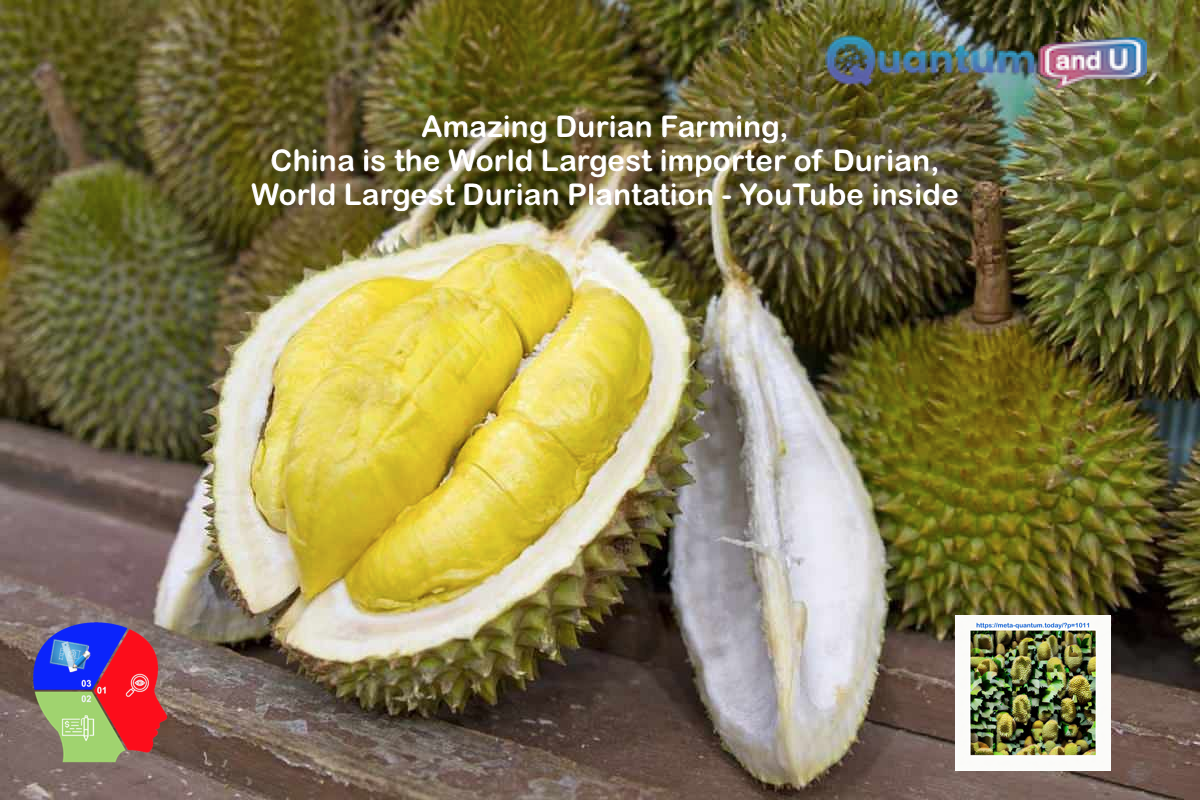
Introduction:
We’re embarking on an adventure into durian farming, an interesting field offering insights into the notoriously smelly fruit. The journey starts with a video tour of the world’s largest durian plantation, showcasing the vast expanse of durian trees under the tropical sun. The tour highlights China’s significant role, not as a producer but as the largest importer of durian. The increase in durian’s popularity among China’s large population contributes to its demand. The video details how the ‘King of Fruits’ has become an essential ingredient in many Chinese dishes. The video not only admires the plantation and discusses China’s role but provides in-depth knowledge about durian trees and their cultivation. From planting the seed, nurturing the sapling, to harvesting the mature fruit, each step requires meticulous care, patience, and understanding of the tree’s lifecycle. This exploration through durian farming will help you appreciate the hard work involved in farming these fruits, understand China’s critical role in the industry, and learn the detailed steps in the durian tree’s growth process. It’s an intriguing trip into the world of durian.
Sections and Detailed Explanation:
- The Origins and Varieties of Durian:
Durian, the King of Fruits, traces its roots back to the Malay archipelago. It’s primarily represented by the species Furio zibathonis, which is the only type available in the international market. With over 300 named varieties in Thailand and 100 in Malaysia, durians hold a special place in Southeast Asian cuisines. - Durian Tree Growth and Lifespan:
Durian trees are majestic, tall beings that can grow up to 50 meters in height and have a trunk diameter of 120 centimeters. They start from seeds and can live for centuries, although their fruit production decreases with age. Surprisingly, the older the tree, the better the fruit quality. - Optimal Growing Conditions:
Being a tropical fruit, durian thrives at elevations up to 800 meters near the equator and up to 18 degrees away from it. It prefers a temperature range of 24 to 30 degrees Celsius and high humidity levels of 75 to 80%. A well-distributed rainfall of 1,500 millimeters or more is crucial, with short dry spells to stimulate flowering. - The Art of Durian Seed Preparation:
The durian farming process starts with preparing the rootstock, involving the cleaning and washing of durian seeds. River sand is an ideal nursery media for sowing these seeds, and they usually germinate within 14 to 21 days. - Grafting and Cultivation Techniques:
To produce the desired durian varieties, grafting is employed. Seedlings are grafted using selected buds from mature, healthy trees. The process involves precise techniques like peeling the skin and sticking the buds on the waiting tree. Proper care is crucial during the sapling stage. - Planting and Irrigation Practices:
Durian’s shallow root system makes it sensitive to dry environments. Adequate watering, proper soil mix, and good drainage are essential during planting and fruit development. A balance of irrigation during different growth stages is necessary for optimum results. - Pruning and Weed Control:
Pruning is done to ensure proper fruit-bearing branches and maximum yield potential. Weeds are managed through manual and chemical means. Proper pruning and weed control contribute to the health and productivity of the durian orchard. - Harvesting and Global Trade:
Harvesting is a crucial step, and indicators like carpal sutures and the fruit stem help identify mature fruits. China leads the durian import market, while Thailand and Malaysia dominate exports. The popularity of specific varieties like Musang King has contributed to a lucrative market.
Conclusion with Takeaway Key Points:
Durian farming, a venture that requires a mix of knowledge, precision, and patience, offers a unique challenge due to the fruit’s distinctive requirements. It calls for a deep understanding of the durian’s ideal growing conditions, which include hot and humid climates of around 25°C to 30°C and organic-rich, well-drained soils. Moreover, mastering grafting techniques, a form of plant surgery uniting a rootstock with a scion, is essential to yield desired quality fruits faster. Beyond understanding growing conditions and grafting, durian farming demands meticulous care during all growth stages. Regular watering, pruning, and fertilizing are vital, as is early disease detection through constant health monitoring. In addition, effective pest management strategies and strict sanitation practices can be the difference between a successful harvest and a poor one. Despite being a time, energy, and resource-intensive task, durian farming can yield significant financial and personal rewards. The journey to harvesting the sweet, creamy fruit is a testament to the farmer’s knowledge, precision, and patience, making durian farming a challenging yet rewarding endeavor.
Takeaway Key Points:
- Durians originated from the Malay archipelago and are widely enjoyed in Southeast Asian cuisines.
- Durian trees can grow to impressive heights and have a long lifespan, with fruit quality improving as they age.
- Optimal conditions for durian growth include tropical climates, specific temperature ranges, and sufficient rainfall with short dry spells.
- The durian farming process involves seed preparation, grafting, planting, and meticulous care during growth stages.
- Pruning, weed control, and proper irrigation are critical for maintaining a healthy durian orchard.
- The global durian trade is dominated by China as the largest importer and Thailand as the largest exporter, with specific varieties like Musang King gaining immense popularity.


